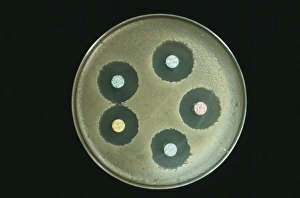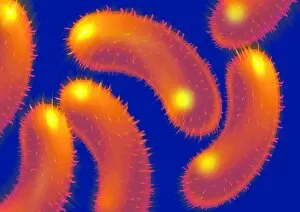Microbial Collection
In the 19th century, microbial discoveries revolutionized the field of microbiology
All Professionally Made to Order for Quick Shipping
In the 19th century, microbial discoveries revolutionized the field of microbiology. From Louis Pasteur's groundbreaking research on bacterial diseases to the production of vinegar, these tiny organisms held immense significance. Microbiology caricatures from that era depicted scientists peering through microscopes, unraveling the mysteries hidden within microbial worlds. These illustrations captured their fascination and dedication towards understanding these minuscule creatures. One such breakthrough was made by Louis Pasteur himself, whose work focused on bacterial diseases. His findings paved the way for advancements in medicine and saved countless lives. The Century Illustrated Monthly Magazine featured his achievements, highlighting his contributions to science. Nature also showcased microbial wonders in Yellowstone National Park, Wyoming. Thermal bacteria mats thrived in warm waters while tourists marveled at steam rising from hot springs. This unique ecosystem demonstrated how life could flourish even under extreme conditions. The park's Black Sand Basin further exemplified this phenomenon as vibrant microbial mats grew amidst its geothermal features. These colorful displays were a testament to nature's resilience and adaptability. Microbes weren't always beneficial; some posed serious threats like anthrax and botulism bacteria. Scientists tirelessly researched antibiotics to combat these deadly infections, striving to protect public health worldwide. Even viruses didn't escape scrutiny as infectious bronchitis virus (IBV) came under intense investigation using transmission electron microscopy (TEM). This technique allowed researchers to observe viral structures with incredible detail, aiding in developing effective treatments against viral illnesses. Thermophile bacterial mats found near Grand Prismatic Spring added another layer of intrigue to Yellowstone's diverse landscape. Tourists marveled at both the beauty and scientific importance of these thriving communities living amidst scorching temperatures. From caricatures depicting early microbiologists' curiosity to modern-day research combating infectious diseases, microbes have captivated our attention throughout history. Their impact spans various fields - from medical breakthroughs to ecological wonders - reminding us that sometimes it is the smallest things that hold the greatest significance.
















































